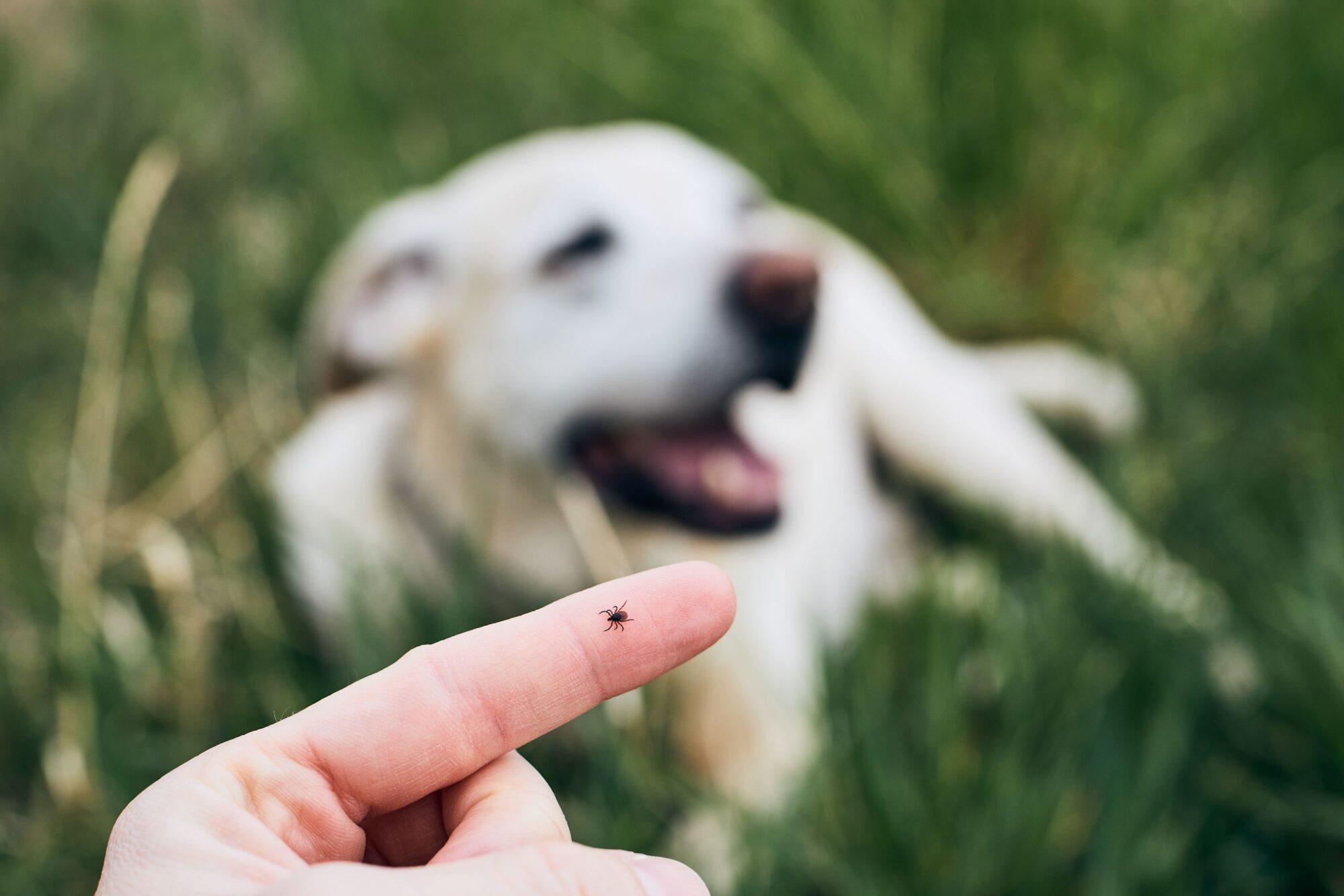How to Prevent Lyme Disease in Pets

Even folks that don’t consider themselves “outdoorsy” find themselves under the great big blue sky every once in a while. One drawback to the natural world is our vulnerability to bugs. While we can swat at flies or run away from wasps, ticks lie in wait for us to simply walk by their perch. Unlike leaping fleas or hovering mosquitoes, ticks hide themselves well and are extremely patient for their next blood meal to arrive.
A Look at Lyme
While not a contagious illness between infected animals, Lyme disease is a zoonotic disease. Ticks are the primary carrier of the bacterium that causes Lyme disease, and can infect both pets and people alike with one bite. Symptoms aren’t always obvious, and can lead to recurring health challenges that begin a few months after infection. Be on the look-out for:
- Fatigue
- Swollen lymph nodes
- Elevated body temperature
- Inappetance
- Swelling of the joints
- Lameness
- Decreased activity
- Kidney issues
If you see these symptoms, do not delay in seeking treatment for your pet. Antibiotics can effectively treat Lyme disease, and the sooner they are administered, the better.
Year-round parasite prevention is a pet owner’s best defense against Lyme disease. Even if your pet isn’t particularly active outdoors, you could unwittingly bring a tick inside the home after an innocent walk outside.
Understanding Ticks
Ticks carry the bacterium Borrelia burgdorferi, which causes Lyme disease. Similar to heartworm-carrying mosquitoes, ticks are vectors responsible for spreading diseases other than Lyme, including Anaplasmosis, Rocky Mountain Spotted Fever, and Babesiosis.
They are known to thrive in overgrown, shrubby, grassy, and forested environments. Like the spiders they are related to, ticks can position themselves (known as “questing”) on tips of grass or leaves and wait for their next victim to walk by. This may be a deer, possum, rodent, bird, amphibian, lizard, rabbit, or your sweet pet.
Using special sensors to detect breath, temperature, vibrations, moisture, and body odor, ticks stretch out their front legs in order to grab hold of their new host. If able to hide themselves well in a particular place on the body, ticks can go undetected while sucking blood because they secrete a type of painkiller in their saliva to boost their stealth operation. The ability to transmit disease is only possible after a full day or two of active blood-sucking.
Prevent Lyme Disease
It is imperative to check for ticks every single day to prevent Lyme disease from infecting you and/or your pet. Using your fingers or fine-toothed comb, run over the belly, back, chest, neck, ears, legs, and armpits to check for ticks. If you find one, please call us at (210) 681-1391 for tips or check out this step-by-step guide.
Make potential tick habitat inhospitable. Trim back overgrown areas of your. Reduce attractants for possible tick hosts, such as bird feeders or baths, compost heaps, and woodpiles.
Stay on marked paths while hiking and always wear light-colored, long sleeves and pants while in the woods. It may even be worthwhile to use a chemical bug repellent on yourself while recreating outdoors.
If you have further questions or concerns about Lyme disease in pets, we encourage you to contact us at Leon Valley Veterinary Hospital.


